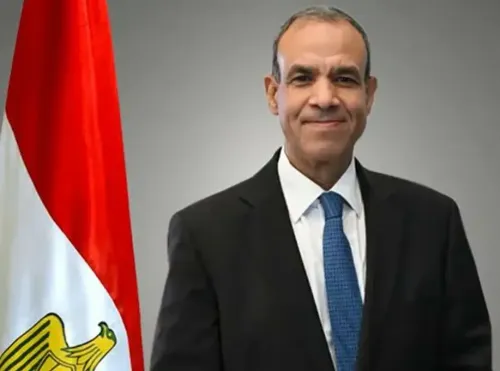Will Strong Domestic Demand Sustain India’s Growth in the 2nd Half of FY26?

Synopsis
Key Takeaways
- India's economy is projected to grow steadily in H2 FY26.
- Domestic consumption is a key driver of growth.
- Government capital spending is on the rise.
- Festive sales are expected to reach Rs 4.75 trillion.
- The RBI has introduced measures to improve credit availability.
New Delhi, Oct 26 (NationPress) India’s economy is poised to achieve consistent growth during the second half of the financial year (H2 FY26), bolstered by robust domestic consumption despite the backdrop of global uncertainties, as reported by SBI Capital Markets (SBICAPS).
The report highlighted that while ongoing trade tensions and elevated tariffs pose challenges to global growth, India’s internal demand serves as a vital stabilizing force.
In light of the United States implementing steep 50 percent tariffs on Indian exports, there is a growing emphasis among policymakers to enhance domestic growth catalysts.
Both central and state governments have intensified capital expenditures in FY26 thus far, which is anticipated to manifest in increased investment levels throughout the economy.
Understanding the significance of domestic consumption, recent adjustments in GST rates were timed with the festive season to stimulate spending.
The Confederation of All India Traders (CAIT) predicts that festive sales could reach an unprecedented Rs 4.75 trillion this year.
Early indicators of this momentum are evident in the auto retail sector, which reported substantial growth during the Navaratri season.
On a global scale, the SBICAPS report described trade conditions as uncertain, labeling tariffs as the “new abnormal.”
Chinese exports to the US plummeted by 33 percent in August 2025 compared to the previous year; meanwhile, overall exports increased by 4.4 percent, suggesting a rerouting of supply chains rather than a complete disruption.
Exporters and retailers have managed to absorb inflationary pressures thus far, although consumers are gradually beginning to feel the strain.
The report also noted a transforming global financial landscape, highlighting that central banks now possess more gold than US Treasuries for the first time in three decades.
While a strong alternative to the dollar has yet to emerge, rising interest in the Chinese yuan and digital currencies indicates an ongoing quest for new monetary anchors.
However, SBICAPS cautioned that the global movement toward rebalancing investments could potentially lead to asset bubbles.
Artificial intelligence has emerged as the latest investment hotspot, attracting massive capital inflows despite untested business models.
Domestically, the Reserve Bank of India (RBI) has implemented measures to enhance credit availability through the relaxation of lending norms.
These measures include the elimination of sectoral caps on large borrowers, relaxed acquisition finance rules, and increased limits for loans against shares, REITs, and InvITs.
Consequently, the credit-deposit ratio has surpassed 80 percent for the first time in FY26.









